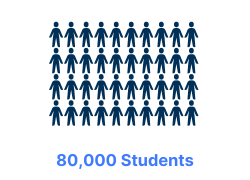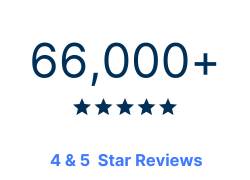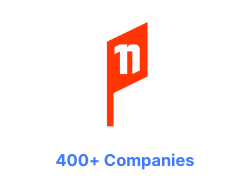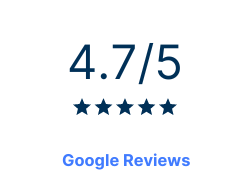
In science-speak, it can process natural human language the same way humans can. It can do natural language processing (NLP) tasks through large language models (LLMs).
In simpler terms, ChatGPT is a machine learning (deep learning) algorithm that can “recognise, summarise, translate, predict and generate text and other forms of content based on knowledge gained from massive datasets,” according to NVIDIA.
The importance of LLMs extends beyond language translation and content creation to other vital areas like vaccine development.
To AI language models, language is beyond English, Spanish, Italian, and other human languages. Language can be anything from code (computer) to protein and molecular sequences (biology).
As such, AI language models can help generate solutions to some of the world’s complex and challenging problems.
In this article, we’ll explore the origins and future of ChatGPT, how ChatGPT works, advancements in multilingual ChatGPT, ethical considerations, responsible AI deployment, and much more.
Origins of ChatGPT: The GPT-3 Series
In 2015, a group of experienced heads from various areas of expertise came together to create OpenAI with a mission to explore artificial intelligence in ways that benefit humanity.
The men include Sam Altman (who currently leads the company), Ilya Sutskever (the Chief Scientist of OpenAI), and Greg Brockman (OpenAI’s President).
Elon Musk was also part of the founding group but is no longer with the company.
Past models from OpenAI
The public version of ChatGPT is powered by the GPT-3.5 language model. But before the 3.5 model, there were three other models.
GPT-1
OpenAI introduced GPT-1 to the public in June 2018. This model was trained on 117 million parameters from data extracted from 11,000 books and billions of words from the Common Crawl dataset of web pages.
It could predict the next words in a sentence and generate fluent and coherent language.
It was limited, though, with many errors, such as sometimes generating repetitive texts, losing track of previous conversations and context, and poorer performance as the text grew longer. Despite this, it formed the foundation for today’s iteration of ChatGPT.
GPT-2
GPT-2 built on the successes of GPT-1 with over 1.5 billion parameters in its training data set. GPT-2 was trained on Common Crawl and WebText.
With improved training data, GPT-2 performed significantly better than its predecessor. It had better text generation capabilities over multiple paragraphs and could be used for content creation and translation.
GPT-2 also had limitations, including the inability to complete tasks that required complex reasoning.
Introduction of GPT-3 and its capabilities
OpenAI released GPT-3 in 2020 and was trained on over 10x the data (175 billion parameters) used to train GPT-2. The dataset is also more diverse.
The expansive and diverse dataset fine-tuned some of the limitations of GPT-1 and GPT-2. Consequently, GPT-3 could complete different NLP tasks, including writing software code and generating coherent and creative text.
In short, GPT-3 was groundbreaking. It could read texts and understand the context and provide a measured response. It was the closest model yet to produce natural human-sounding text.
Though not perfect, the GPT-3 model was sound enough for AI tools designed for content creation, language translation, and chatbots. ChatGPT is an example of an AI tool developed using GPT-3.5, a slightly improved version of GPT-3.
Evolution and enhancements of ChatGPT
OpenAI released ChatGPT to the public on the 22nd of November, 2022.
Its growth was largely driven by word of mouth as users shared some of the “mind-blowing” things ChatGPT did for them.
Within five days, it had garnered over a million users. Two months later, it had gained over 100 million users.
The first iteration of ChatGPT was available to the public and built on the GPT-3.5 model. By February 2023, OpenAI created a premium subscription to give users priority access to the platform and new features.
In March 2023, OpenAI announced a new ChatGPT model, GPT-4. ChatGPT Plus subscribers had access to the new model, while users on the free tier retained access to the GPT-3.5 model. You can also access GPT-4 via API.
Recent enhancements
-
In March, OpenAI launched plugins that you can use to connect ChatGPT to the internet. This feature is only currently available to a small number of developers and Plus subscribers.
-
OpenAI released the Code Interpreter plugin (only available to ChatGPT Plus subscribers) in July 2023. The plugin is capable of data analysis, video editing, data formatting, and much more. ChatGPT can provide more up-to-date and accurate information to your prompts and queries with this plugin.
-
In May 2023, OpenAI launched the iOS version of the ChatGPT app. The Android version was released in July 2023.
OpenAI continues to upgrade ChatGPT for safety and accuracy. The AI company also continues to add more functionality to the chatbot.

How does ChatGPT work?
When you type a prompt in ChatGPT, the AI text generator tries to understand your text and then generates words, one after the other, that it thinks best answers your prompt.
What ChatGPT can generate is limited to the data it was trained on. The training data enables it to assign “meaning” to your input and predict the most plausible answer to your prompt.
The training data, text written by humans, is expansive and diverse enough to ensure ChatGPT generates human-sounding text. The chatbot identifies patterns and relationships between words in natural languages using deep learning.
OpenAI further refined ChatGPT’s conversations through what is known as “reinforcement learning with human feedback (RLHF)” in computer science.
Just think of it as a way for AI to compare which response from two models is better and learn from the better response.
GPT-3 and GPT-4 model use cases
Creators and developers have used the GPT-3 and GPT-4 models for all sorts of applications, including:
Text-based conversational AI applications
These are applications that converse with users. It’s like chatting with a friend. You can ask questions and get answers. You can assign the tool language understanding tasks and get a coherent response.
A few examples of such applications are chatbots and virtual assistants. You typically need an interface to enter an input, often in the form of a prompt.
Customer support and service
LLMs are also finding applications in customer service chatbots.
For this purpose, GPT-4 is the best model to use. This is because GPT-3.5 is more prone to what experts describe as hallucinations, a penchant to conjure information when it doesn’t have an answer - more on this phenomenon later.
Additionally, the model has to be trained on the company’s data (website, FAQs, and help center) to ensure customers get the most accurate and trustworthy response to their queries or complaints.
There also has to be a way for the chatbot to pass questions beyond its knowledge to human agents.
Octopus Energy, an energy supplier, baked ChatGPT into its customer support, with the AI tool now attending to 44% of the company’s inquiries.
The company’s CEO says the AI tool is doing the work of 250 employees. That’s in addition to the AI solution delivering greater satisfaction than human agents.
Creative writing and content generation
Alongside ChatGPT, many AI tools are leveraging the GPT-3.5 model to assist humans with content creation, such as crafting and editing emails, lyrics, marketing copy, social media posts, blog posts, and more.
When using ChatGPT or similar tools for content generation, be clear, concise, and detailed with your instructions. You should also provide useful context to get the best paragraphs.
Language learning and tutoring
ChatGPT can also serve as a tool to learn a language. You can ask the chatbot to provide common expressions or greetings.
You can request examples of a word in multiple contexts. You can also simulate a conversation with the ChatGPT and practice your mastery of a language.
Duolingo is an example of a company that has integrated GPT-4 into its product leading to two new features: personal tutor and role-based conversations.
Cheggmate has also embedded ChatGPT into its services to help students with assignments in place of human specialists.
Udacity also used ChatGPT to create a virtual tutor to provide personalized feedback to students.
Assistance in professional tasks
Over the last 2-3 years, there’s been a slew of new AI products helping users across multiple fields. GitHub released Copilot and describes it as “Your AI pair programmer.”
Ultimately, these apps help deal with repetitive tasks and free up time for you to do more strategic work.
Freshworks, a software company, has cut app development time from nine weeks to less than a week by adopting ChatGPT.
Advancements in the multilingual ChatGPT
ChatGPT supports over 90 languages. However, ChatGPT’s performance varies across these languages. Research has shown that the AI chatbot is more accurate in English than in other languages.
For example, the researchers found that ChatGPT excels in translating other languages into English but struggles with the reverse.
Another study found the chatbot lacking “at answering factual questions or summarizing complex text in non-English languages.”
This is unsurprising since a big part of the large dataset it was trained on was in English. Notwithstanding, OpenAI has made significant progress in ChatGPT’s multilingual capabilities through GPT-4.
Per OpenAI CEO Sam Altman, “GPT-4 is unlike previous models of ours, which were good at English and not very good at other languages. Now, GPT-4 is pretty good at a large number of languages.”
These language challenges have not escaped the attention of OpenAI’s leadership. During a Congressional hearing, Sam Altman noted how the company worked with the government of Iceland to ensure their language featured prominently in the model.
He further stressed that OpenAI is excited to partner with governments of other low-resource languages to get data sets it can add to the company’s model run.
Facilitating global communication and business expansion
One of the challenges of companies with global footprints or operations is communication.
You need to converse with customers with limited or no grasp of the English language. You must localise your website and product descriptions into different languages.
For example, Coca-Cola engaged the help of Bain & Company to use ChatGPT to “craft personalised ad copy, images, and messaging” to the former’s customers.
ChatGPT can be used for localisation, multilingual chatbots, and text and document translations.
Contextual Understanding and Domain-Specific Knowledge
By default, ChatGPT is constrained by its training data set. It can’t give any information outside of what it was trained on, thus limiting what you can use it for.
However, the interesting thing is you can use ChatGPT with your own proprietary data to give it a contextual understanding of your business and use it for your niche new tasks. OpenAI calls this finetuning.
You can fine-tune ChatGPT with structured or unstructured data sources such as financial reports, sales data, customer support logs, email correspondence, and website text.
You’ll equally need to add domain-relevant conversational context to enable the fine-tuned chatbot to understand the domain of user questions.
So your design process must involve adding context, what the chatbot can and can’t answer, and the format of its responses. Users will ultimately spend little thought on their questions.
By spending more time on the above tips, users can get more precise and relevant answers irrespective of how poorly they craft their questions.
Introduction of ChatGPT 4
OpenAI announced the release of ChatGPT 4 on March 14, 2023. When you see ChatGPT 4, it simply means ChatGPT powered by the GPT-4 model. Below, we assess OpenAI’s biggest and most intelligent model yet.
What's new in ChatGPT 4?
ChatGPT 3 could only receive text input. Now, you can upload an image and ask the chatbot to perform a task like describing the image content.
In the same vein, the AI tool can also read a chart or graph and answer questions on the content of the visualisation. You can also supply ChatGPT 4 with a sketch of a website mockup, and it will write the code to build the website in your drawing.
It can't generate visual content yet, though.
You can also input over 25,000 words in a single prompt, thanks to improved memory allocation to the GPT-4 model.
What’s the Difference between GPT-4 and ChatGPT 3?
If ChatGPT 3 is big, GPT-4 is about 500x bigger. The "bigger," in this instance, talks about the parameters and vast amount of fine details and nuances it can understand.
As a result, GPT-4 enjoys better performance in multiple ways. For starters, GPT-4 scores 40% higher than GPT-3 on OpenAI's internal factual performance benchmark. This score means GPT-4 sticks to the facts more and produces fewer hallucinations.
You can also change the behaviour of GPT-4 better than you could GPT-3. This includes things like specifying which tone or style to write in.
The GPT-4 model is also more adept at rejecting illegal, shady, or distasteful requests.
Lastly, GPT-4 can handle tasks requiring complex reasoning better than its predecessors.
Is ChatGPT 4 Worth the money?
ChatGPT 4 is valuable due to offering better performance than the free GPT-3 model when used in a wide range of applications. It’s more reliable, accurate, and versatile. You’ll also have priority to the model irrespective of load on the website.
With that said, you’ll have to carefully consider your specific needs, budget, and how often you’ll need to use the model. The free public version, GPT-3.5, may be adequate after considering these factors.
How do I upgrade my ChatGPT subscription to ChatGPT Plus?
To upgrade your ChatGPT account to Plus, follow the steps below:
-
Create an account if you don’t have one yet. Go to chat.openai.com to get started.
-
Log into your account.
-
Click “Upgrade to Plus” from the bottom of the left sidebar.
-
Click “Upgrade to Plus” from the next window.
-
Enter your credit card details and click the “Subscribe” button at the bottom of the screen.
Ethical Considerations and Responsible AI Deployment
Artificial intelligence has immense potential for society. We already see some of that potential with the deployment of ChatGPT.
Nevertheless, there are equally pressing ethical issues around the mainstream usage of AI technology. Some of these concerns include:
1. Bias and discrimination
A model can only perform based on the data it was trained on. Sometimes, the data set is riddled with the same societal biases we observe around us daily.
In the past, we’ve seen Amazon scrap its new recruiting engine because it had a strong bias against women.
These AI tools will continue to perpetuate discriminatory outcomes if you are not careful in ascertaining if data contains biased information.
2. Transparency and accountability
AI tools are not perfect. They make mistakes, can produce wrong results, and may cause harm. There’s typically a cloud of secrecy regarding most AI projects. As such, there’s little to no accountability when things go badly.
3. Privacy
There are privacy concerns around the large swathe of data OpenAI used for training its models and its farming of personal data for the continuous 'training' of the algorithms underlying the operation of the platform".
In March 2023, Italy blocked the app due to privacy concerns and compliance with the General Data Protection Regulation.
Ownership and plagiarism
It’s important to remember that ChatGPT doesn’t generate knowledge. It predicts an output from the data it was trained on. Consequently, it may lift portions of work directly from its training data.
Another consideration is who owns the rights to content and ideas generated by artificial intelligence. These are some areas that need more clarity.
Social manipulation and misinformation
There are also concerns that nefarious actors can feed AI tools data intended to manipulate users and spread misinformation.
A primary example that’s become widespread is the use of deep fakes to interfere with elections and incite political instability.
Job displacement
We earlier cited an example of a company that saved 250 jobs by integrating ChatGPT into its customer support tech.
Goldman Sachs has also said that tools like ChatGPT can displace up to 300 million jobs. That’s 300 million unemployed individuals but perhaps more profit for corporations.

The Future of ChatGPT
In an interview with The Times, Sam Altman noted that in the future, our interactions with the chatbot will be via two-way voice. That’ll be like speaking on the phone with a friend.
He also noted that eventually, you’ll only need to have a small conversation with the chatbot, and “a huge amount of things get done on your behalf.” This will be from the model “getting to know you better.”
Down the line, the company also aims to increase the kind of inputs that ChatGPT can take.
The goal is to get closer to becoming an artificial general intelligence, AI that’s as intelligent - or even more so - as a human being. The model’s ability is currently not up to this level.
What is the impact of ChatGPT on natural language processing research?
One of the biggest impacts of ChatGPT on natural language processing research is more investment. In the first six months of 2023, investors have poured over AUD 22.8 billion ($15 billion) into AI companies, including those focused on NLP and LLM technologies.
ChatGPT has also created an avenue to get human feedback on a large scale. OpenAI collects data from users to improve ChatGPT’s performance, especially its conversational skills.
The same logic applies to the technology’s use in multiple industries. Researchers can explore ChatGPT’s practicality and leverage the data to improve the model.
ChatGPT was also released as a “Free Research Preview,” which allows researchers to experiment with the model. This step has fostered collaboration in the NLP research field, as many experts look at the models from different angles.
The Human-Machine Collaboration with ChatGPT
ChatGPT, in its present iteration, is limited. It becomes all the more useful and complete with your contributions.
It's great, but there are certain things it can't do for you. And even for tasks it can do, you still need to be vigilant to ensure it is accurate. That's why your stance should be to see ChatGPT as a tool for collaboration.
You can use ChatGPT to improve productivity by assigning mundane and repetitive tasks to the app. For example, Sam Altman built a tool that summarises the content of emails from unknown senders.
ChatGPT is also a helpful assistant for creative tasks like content creation. The AI chatbot can help you generate ideas and craft copy in seconds rather than spending long hours with writer's block.
Even when integrated as a customer support chatbot, you will still need human agents to answer queries it cannot handle.
More importantly, you can't replace human emotional intelligence. ChatGPT can pick up contexts and sentiments from the text but is limited regarding emotional intelligence.
Particularly, the beauty of being able to finetune the model provides a tremendous opportunity to build bespoke solutions using proprietary data.
Takeaway: From humble beginnings to viral chatbot
Per Steve Jobs, “If you really look closely, most overnight successes took a long time.” That quote succinctly captures OpenAI’s success with ChatGPT.
From building the GPT-1 model to launching ChatGPT with the GPT-3.5 model to releasing GPT-4, it’s been quite the journey.
ChatGPT has demonstrated the incredible possibilities and potential of AI language models. Companies and users globally are exploring and enjoying this potential by using that chatbot for content generation, text summarisation, and translation across multiple languages.
ChatGPT is not perfect, and there have been different doomsday prophecies of AI going wrong and that being light’s out for the world.
However, leaders like OpenAI have openly committed to talking publicly about the risks of AI and the steps they’re taking to mitigate these threats.
Overall, ethical and responsible AI has its place in developing practical solutions for healthcare and environmental challenges.
Whether on a personal or company level, ChatGPT can elevate your productivity and help you do more with less.
At Nexacu, we are a leading provider of practical technology training across Australia and New Zealand. Explore some of our ChatGPT courses starting with Beginner to understand how to integrate the technology into your daily workflows.
 Australia
Australia
 New Zealand
New Zealand
 Singapore
Singapore
 Hong Kong
Hong Kong
 Malaysia
Malaysia
 Philippines
Philippines
 Thailand
Thailand
 Indonesia
Indonesia
 phone
phone
 email
email
 enquiry
enquiry
























